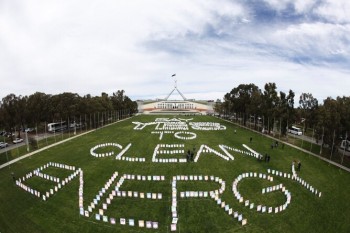RET 2.0 – Or Is It?

Dr Anthony Horton reports that although the renewal energy industry is becoming increasingly competitive, international investors are turning their backs on Australia.
On October 22 2014, Industry Minister Ian McFarlane announced the Australian Government’s preliminary position on the Renewable Energy Target (RET) at the National Press Club in Canberra. According to Australian Solar Council CEO John Grimes, the main points outlined as part of the Government’s position included exempting all emissions intensive industries from the RET, leaving the household solar support scheme as it is, and slashing the RET to 20%. On Friday October 24 2014, some clarity was provided by Minister McFarlane and it is now possible that if all of the industries deemed by the Clean Energy Regulator to be emissions intensive are exempted (as sought by the Government), the target is likely to be reduced from 41,000GWh to approximately 36,000 GWh.
Two-yearly reviews of the RET would also come to an end, which is likely to be welcomed by the Clean Energy Council. However, they may not be so welcoming of the announcement of yet another RET review, this time by the Climate Change Authority (CCA), which will mark the third review in two years. The CCA’s statutory review of the RET, which must be completed by 31 December 2014, will consider the role of the electricity sector in being able to meet the Australian emissions reduction goals in a cost effective manner to 2020 and beyond. Due to the limited time frame, the CCA will draw on its previous work and the public submissions and analysis contained in the Warburton review report (which reportedly cost more than $500,000 and the recommendations of which were called into question by the current Government). The CCA will not release an issues paper or a draft report, however stakeholders can email the CCA to provide “additional thoughts”.
In response to news of the CCA’s review, Clean Energy Council Acting Chief Executive Kane Thornton stated that while the renewable energy industry was becoming increasingly competitive, no business should be expected to operate under the conditions the industry is enduring. He noted that significant international investors were turning their backs on Australia and looking for more favourable investment environments elsewhere.
While it is noted that the Government negotiations with the Labor opposition are ongoing and therefore more details will be released in due course, I think it is fair to question the number and nature of the reviews that have been done to date and the CCA review to be completed by 31 December 2014. If the CCA is placed in a situation whereby they have limited time to conduct a review and need to use parts of a report that has already been questioned by the very Government who has asked them to conduct another review, I’m afraid that my definition of a review (and I suspect most people’s definition) doesn’t seem to align with that of the current Government. I also think that it is at the very least unreasonable that the CCA be reduced to asking for people’s “additional thoughts” by email as the sole means of stakeholder consultation given that an issues paper or draft report won’t be released.
See more information regarding the Government’s preliminary RET position here.
This article was first published on Dr Horton’s blog.
Dr Anthony Horton is an Environmental Professional with extensive knowledge of Western Australian and Commonwealth Environmental Protection legislation and its application in the State Government Department of Environment and Conservation and the mining industry in WA.
Like what we do at The AIMN?
You’ll like it even more knowing that your donation will help us to keep up the good fight.
Chuck in a few bucks and see just how far it goes!
Your contribution to help with the running costs of this site will be gratefully accepted.
You can donate through PayPal or credit card via the button below, or donate via bank transfer: BSB: 062500; A/c no: 10495969









